Representatives of the Solanaceae family, cultivated and wild, can be found all over the world. These are herbaceous and woody plants, lianas, annuals and perennials. Pollinated by insects. In tropical areas, birds and animals can participate in pollination. The main species richness is concentrated in Central and South America.
The numerous nightshade family, numbering more than 2,600 species, plays an important role in human life. Plants are of food, medicinal, and technical importance.
Vegetable nightshade crops
Vegetables of the nightshade family came to Europe from the middle of the 16th century. Modern varieties of vegetable crops are the result of centuries of work by a large army of farmers and breeders.
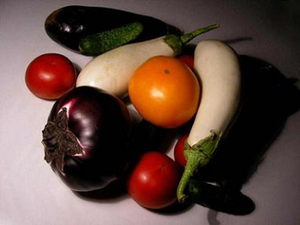 Nutritional, feed and technical value potatoes difficult to overestimate. Culture occupies one of the leading places in human life. It is the main starchy plant. Depending on the variety, up to 25% starch is present in the tubers. It is the main raw material for the production of alcohol. The huge content of vitamin C, complex carbohydrates, fiber - make potatoes an important food product. During the years of devastation in the 20s - 30s. of the last century in those areas where potatoes grew, the population did not suffer from widespread hunger.
Nutritional, feed and technical value potatoes difficult to overestimate. Culture occupies one of the leading places in human life. It is the main starchy plant. Depending on the variety, up to 25% starch is present in the tubers. It is the main raw material for the production of alcohol. The huge content of vitamin C, complex carbohydrates, fiber - make potatoes an important food product. During the years of devastation in the 20s - 30s. of the last century in those areas where potatoes grew, the population did not suffer from widespread hunger.- Eggplant grew wild in India. From where it was taken to Europe. I use the fruit for food - a blue berry rich in minerals, vitamins, pectins. It is especially appreciated by nutritionists for its high content of potassium salts, which are necessary for the normal functioning of the heart muscle.
- Tomato - thanks to the development of greenhouses, this valuable representative of the nightshade family is present on our table all year round. Has great nutritional value. It is useful for gastritis, anemia, cardiovascular diseases. The recommended daily intake of tomatoes by nutritionists is 90–100 years.
- Pepper used in food both sweet and pungent. The fruits contain a huge amount of vitamins C, P, mineral salts, which help to strengthen the walls of blood vessels and eliminate cholesterol. Hot pepper preparations are used in medicine for grinding, as an irritant. Alcohol tinctures for grinding, pepper patches are used as an auxiliary treatment for radiculitis, neuralgia, sprains, bruises.
- Physalis South American and Mexican are not widely used along with the popular vegetable nightshade. Mexican physalis is close to tomatoes in their biological characteristics. The South American groups include the strawberry physalis, whose berries smell like strawberries, and the Peruvian. Berries of Peruvian physalis are sweet and sour, with a pineapple aroma. Physalis fruits are pickled, salted, jam is made.
- Melon pear grown in amateur gardens. Gives sweet fruits containing carotene, iron, vitamins of group B. Vegetables are suitable for pickling, cooking jam, eating raw.
Medicinal plants of the Solanaceae family
These plants are poisonous, so they are used with great care and in very small doses. They are used both in folk and official medicine. Eating the fruits, berries or seeds of these plants can lead to poisoning.
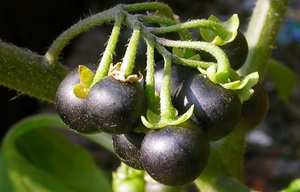 Bittersweet nightshade or wolf berries, has long been used in folk medicine as an expectorant, diuretic, choleretic agent, for skin diseases, psoriasis. Tinctures are made from young stems and leaves.
Bittersweet nightshade or wolf berries, has long been used in folk medicine as an expectorant, diuretic, choleretic agent, for skin diseases, psoriasis. Tinctures are made from young stems and leaves.- Belladonna or belladonna... Leaves and roots are used more often. As a wild plant, it is widespread in the Crimea, in the Caucasus. It is grown as a medicinal plant in pharmaceutical gardens. It is a part of tinctures, rubbing, tablets. Possesses anesthetic, antispasmodic properties. Used in the treatment of ulcers, Parkinson's disease, cholecystitis.
- Black henbane... The most valuable are the leaves and oil from belladonna seeds. The oil is used in the treatment of rheumatism, gout, bruises, as a pain reliever. In small doses, henbane preparations act as sedatives. Excessive dosage causes increased arousal. The henbane alkaloids are a part of Aeron tablets prescribed for sea and air diseases.
- Datura ordinary... The alkaloid hyoscine is obtained from the leaves, which has a calming effect on the nervous system. The antispasmodic effect of the leaves is used to create drugs for the treatment of whooping cough and asthma.
- Carnioli scopoly - in medicine, the roots and rhizomes of the plant are used. Used in the treatment of diseases of the eyes, liver, stomach ulcers and duodenal ulcers.
- Mandrake - a perennial plant, several species of which are poisonous. The sight of the Turkmen mandrake produces fruits that are edible when ripe. In the roots of the representatives of the poisonous species of mandrake there is an alkaloid scopolamine.
- Tobacco - herbaceous annual plant. Its vegetative organs include the alkaloid nicotine (plant poison), which is highly addictive when smoking. Used in folk medicine as an infusion of leaves in the treatment of skin diseases. It has not been used in traditional medicine.
Ornamental plants of the family Solanaceae
Ornamental nightshade plants are appreciated by gardeners. Vines and climbing shrubs delight with bright flowers and fruits of various colors.
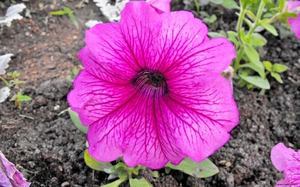 Petunia hybrid widely used in landscaping. It is unpretentious, blooms for a long time and abundantly. Large flowers of various colors can be two-colored, with spots or a border. It blooms for a long time - before the onset of frost. Suitable as an ampelous plant (plant with cascading shoots) in vertical gardening.
Petunia hybrid widely used in landscaping. It is unpretentious, blooms for a long time and abundantly. Large flowers of various colors can be two-colored, with spots or a border. It blooms for a long time - before the onset of frost. Suitable as an ampelous plant (plant with cascading shoots) in vertical gardening.- Ampel calibrachoa - one of the best ampelous plants from the nightshade family. Cascades of bells of various colors allow you to create compositions when decorating balconies, terraces in the city and in the garden.
- Scented tobacco blooms for a long time. The most fragrant is white tobacco. Flowers open at sunset and in inclement weather.
- Bittersweet nightshadedue to its moisture-loving nature, it is used in landscape design for landscaping water bodies.
- False-pepper nightshade grown in pots. In the period from summer to autumn, the plant is decorated with bright red spherical fruits.
- Jasmine nightshade used for ampel gardening. Blooms in bunches of white flowers from mid-spring to mid-autumn.
The nightshade family is numerous and varied. Without your favorite vegetables - tomatoes, peppers, eggplants, as well as potatoes, it is impossible to organize proper nutrition. Medicinal plants are used as raw materials for the preparation of medicines. Decorative representatives of the family delight the eye with their rich flowering.
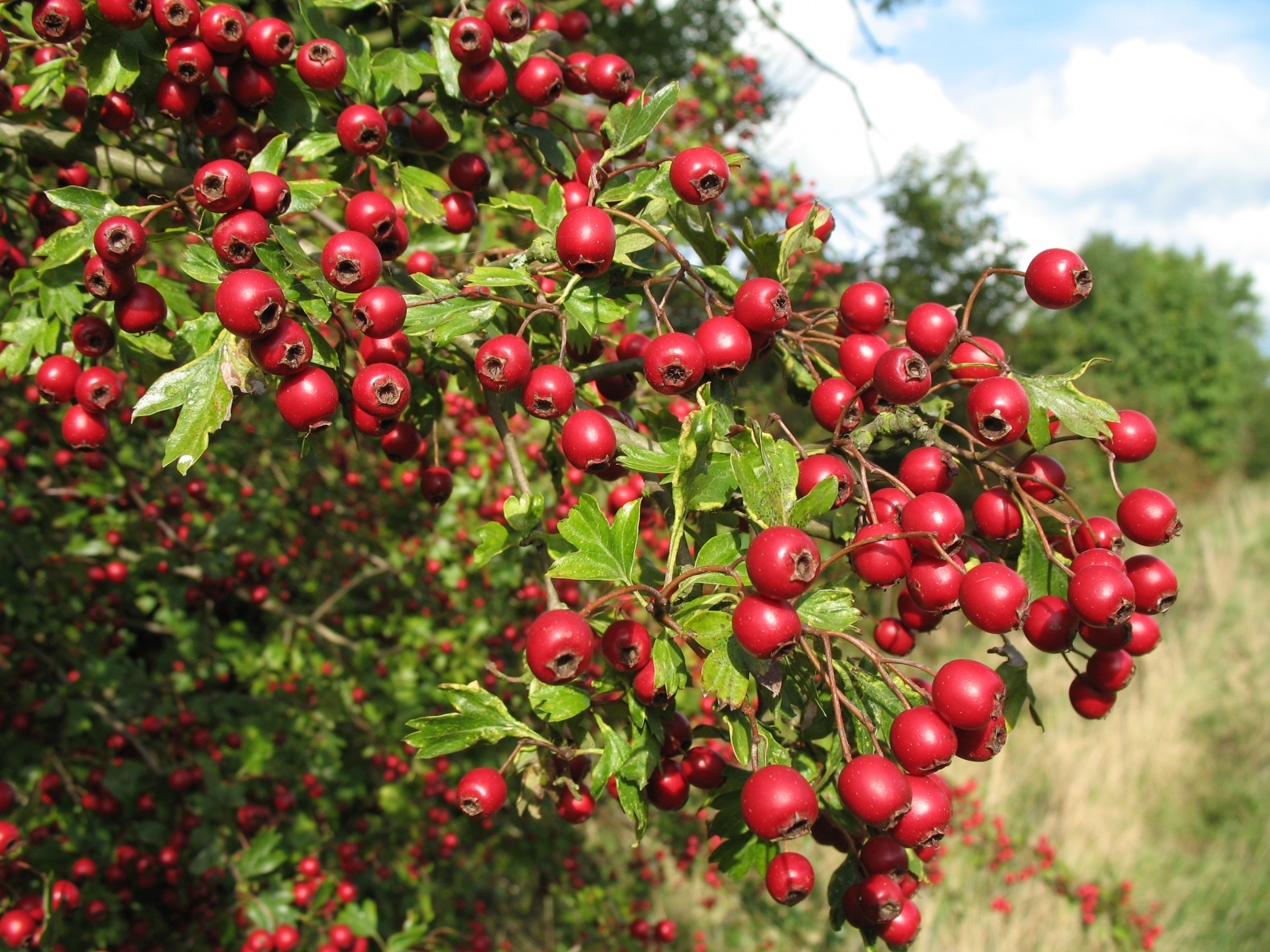
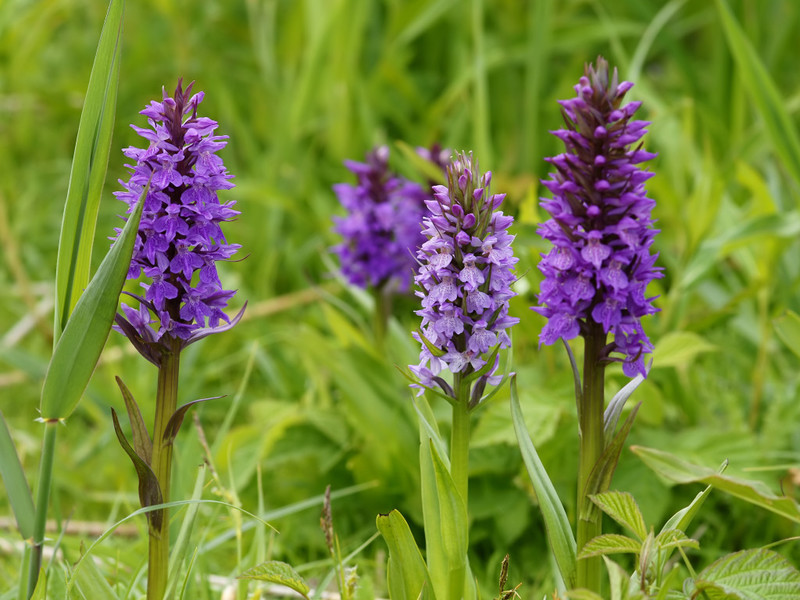

4 comments